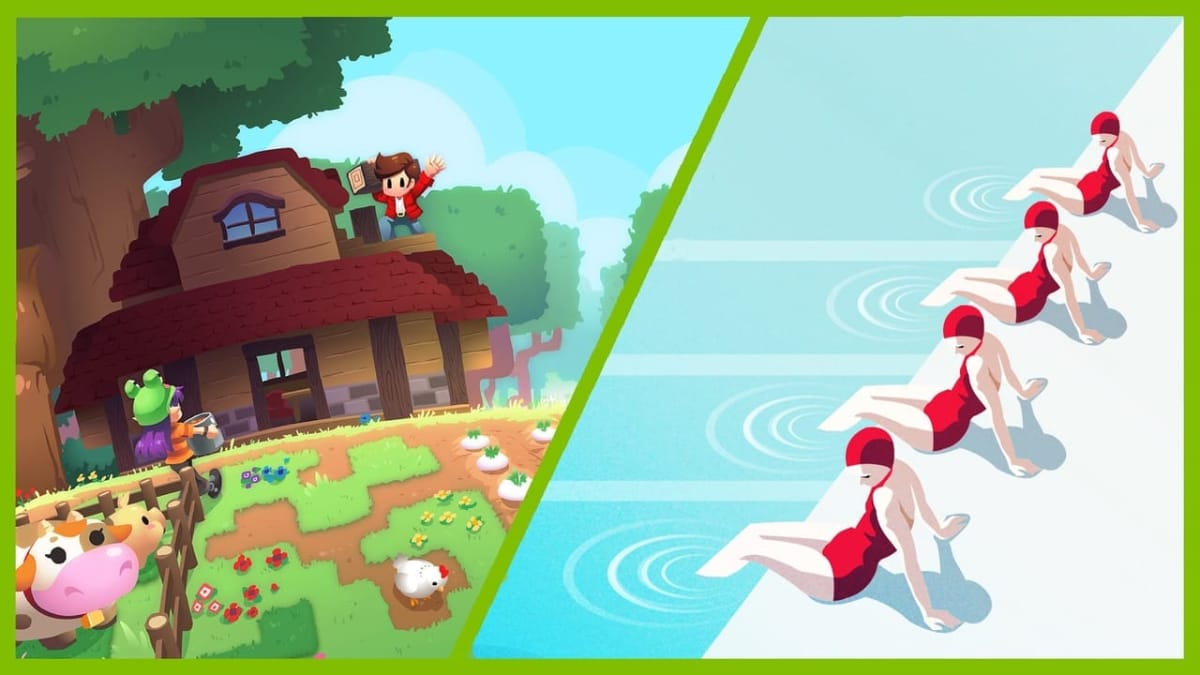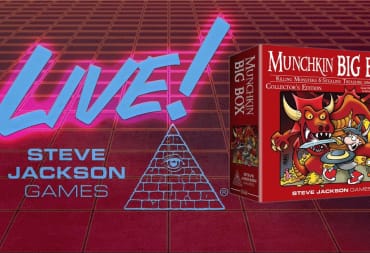Welcome to Coverage Club, the regular series where we shift our critical eye towards smaller games that deserve some attention. Each week, our editors select two titles and provide honest first impressions in the same style as our full reviews. Games can range from brand new titles hitting Early Access to older hidden gems that never got their due. No matter your preferences, you’re sure to find something off the beaten path here. This week, we're working hard on the farm in Staxel and then relaxing by the pool with Swim Out.
Staxel
Covered by Robert N. Adams
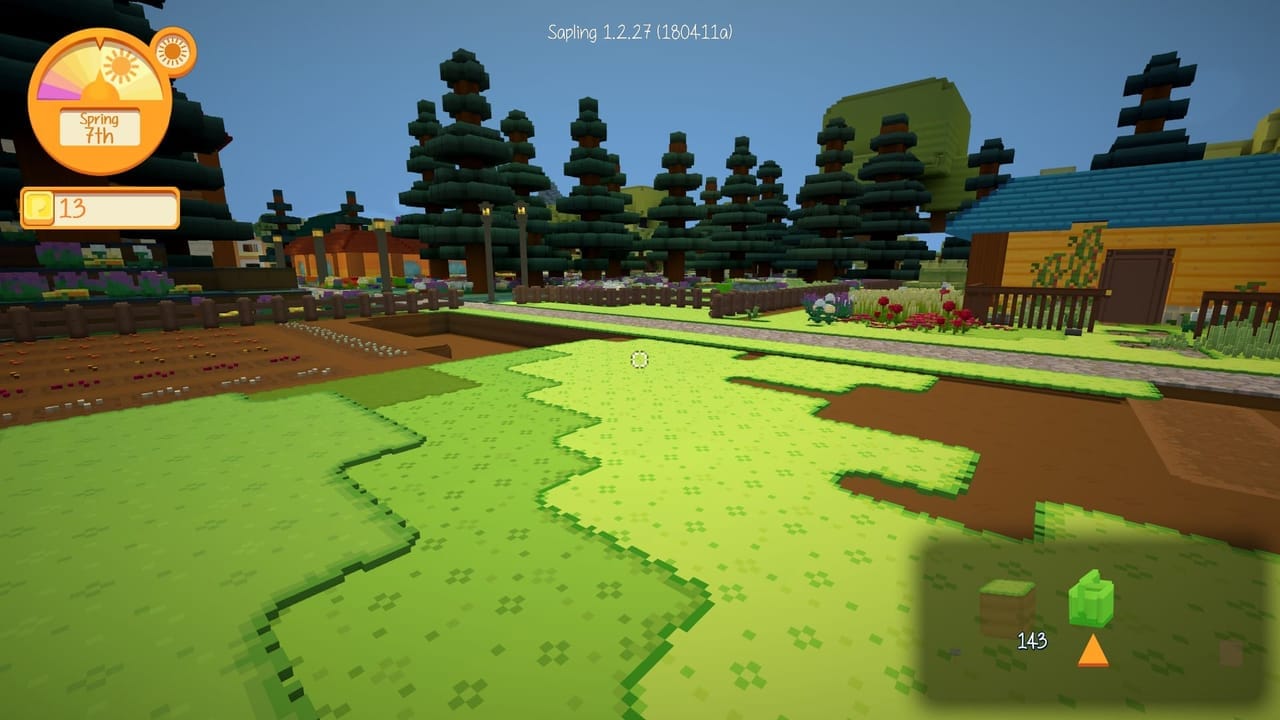
Staxel seems like a game that sits firmly in the voxel sandbox category. It fits perfectly right next to titles like Trove and Minecraft. That's what I was able to gather from my first glance at the media surrounding the game. This sort of gameplay is right up my alley and I was eager to check it out.
The game opens with you meeting Farm Fan, an elf girl who offers to walk you through a short tutorial on getting started. She introduces you to a couple of villagers in town, tells you the basics about planting crops, and then sends you on your way. I'm well familiar with this style of game, and I must admit that I found myself at a bit of a loss at first. It felt like the tutorial ended just a little too early - someone who is new to the genre might have a bit of difficulty figuring things out without outside help through a wiki or guide.
I managed to earn some early Petals (the game's currency) by selling some wood that I had chopped up. Much like Harvest Moon or Stardew Valley, your farm is in a state of disrepair and it's up to you to fix it up. I had wanted to extend the cobblestone road from the town, push it through my farm, and have it continue into the forest beyond. I had no idea how to actually make the cobblestone path blocks that would match the existing style. The pause menu listed blueprints stating the requirements, but there didn't seem to be any way to actually make them.
After walking around town for a bit, I figured out that crafting in this game is done through buildable workstations that you have to purchase or earn through completing quests. I purchased the Assembly Station after selling more wood, made some blocks to continue the road, and discovered that I was woefully lacking in raw materials to continue the job. I also had a barn that was under construction that I was keen to get underway, but this required additional stations and I was short on cash.
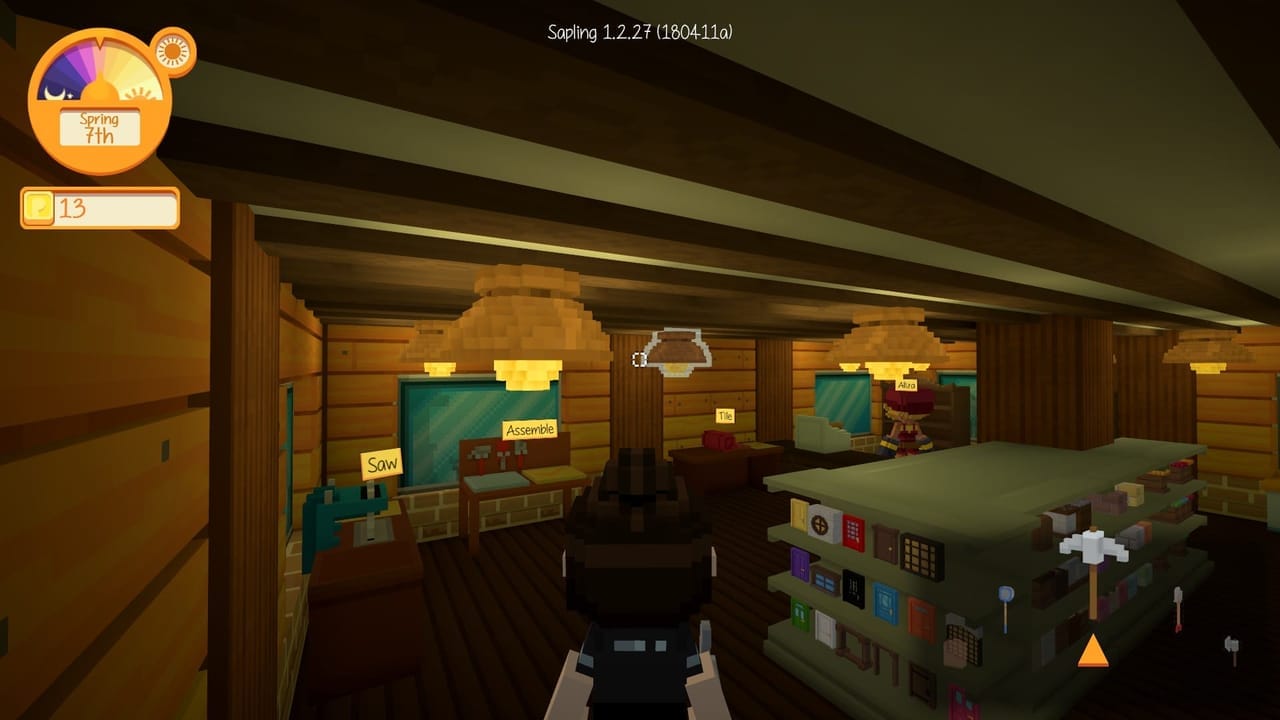
At this point of my playtime with Staxel, I took stock of what I had going on. I had a couple of construction projects underway in my farm, I'd completed a couple of quests in town, and I'd spent a day or two running around catching bugs and collecting seashells for money. The earning potential was definitely there, but I was juggling so many different things that I found it a bit hard to focus on any one thing in particular.
The initial crop of potatoes was soon ready to be harvested, so I happily snatched them out of the ground and sold them in town for a healthy profit. Now that I had a few thousand Petals to spend, I decided to take a look at what I could actually buy in the shops. The general store offered up animals, furniture, seeds, crops, and tools. The building store had blueprints for learning new crafting recipes, workstations, and various different types of blocks. It felt like there was a good deal of freedom in deciding how you wanted to go about building things in Staxel. You could harvest raw materials and make things yourself or you could focus on earning money and just buy the blocks you wanted to buy.
Before I knew it, my allotted two hours with the game was up. After finishing out my current day, I had clocked in just over two hours of playtime with Staxel. I get the impression that it's a lovely mix of Minecraft and Stardew Valley. If you're a fan of either of those games (or the genre in general), then I think this is a title you should strongly consider picking up. I feel like I've just scratched the surface of a wonderful game.
Staxel was played on PC via Steam with a copy provided by the developer.
Swim Out
Covered by Alex Santa Maria
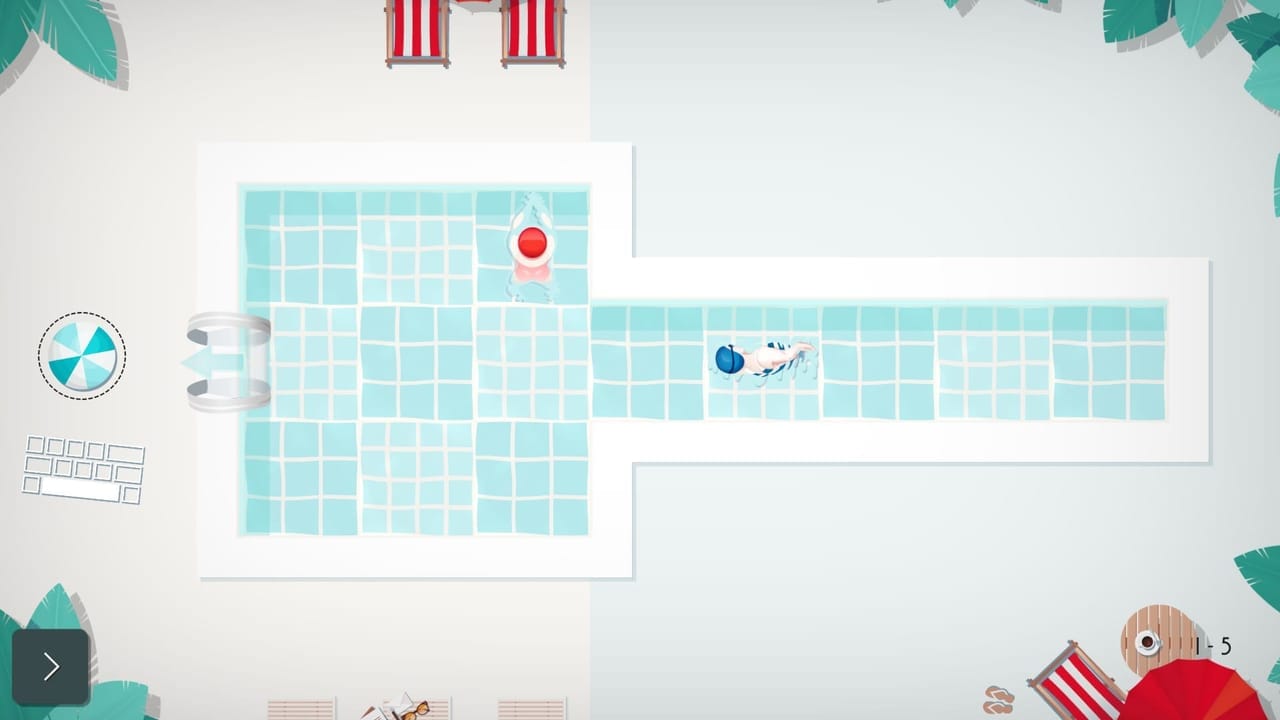
Inspiration can come from the most unlikely of places. For Hitman GO, scale dioramas and architectural models proved to be the onus for transferring the popular murder simulator to the small screen. Amid that inspiration, the developers created an entirely unique puzzle format, one that other developers are eager to add onto. On this second level of inspiration, we have Swim Out, a game that polishes a proven formula with its own unique style.
Swim Out also joins another ongoing movement by being a completely nonviolent game. It borrows the same setup where you move once and then everyone else on the field moves. This forces you to skirt around obstacles. As the name would suggest, your goal is escaping from a swimming pool and avoiding swimmers rather than murdering henchmen. Instead, you'll be tailing swimmers and throwing inner tubes in their way before making it to the ladder.
This all sounds simple enough, and that simplicity is a big part of Swim Out's appeal. The game greets you with no menu or options, choosing to instead thrust players directly into the puzzles. Outside of subtle control tutorials, there is no guidance, no timers, and minimal text. Just like a sunbather relaxing out by the pool, Swim Out invites you to just relax and take your time. While some might scoff at the lack of pressure, it makes the game perfect to portably pick up and play.
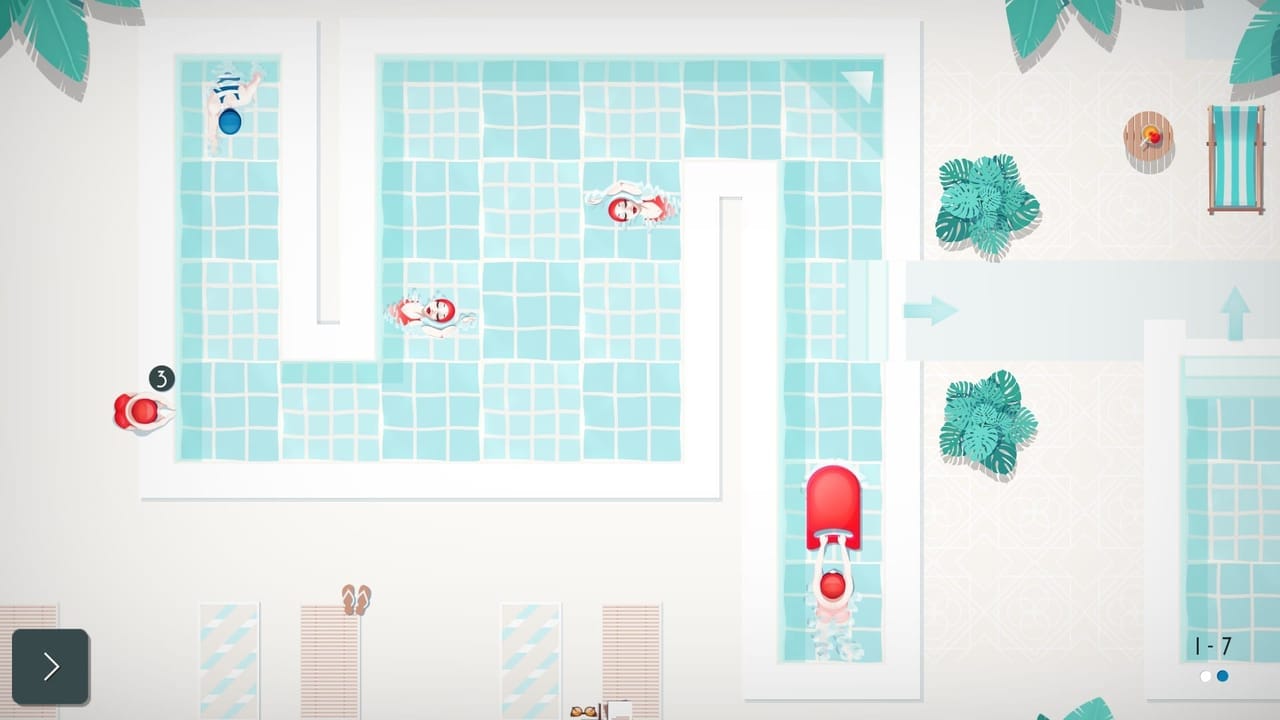
There are 100 levels to go through, with the game eventually introducing twelve types of swimmers to contend with. These aren't long levels to start, but the puzzles get more and more complex. As I went on, I found myself treating Swim Out like a crossword puzzle book. I would pick it up over and over in the evenings, treating it as a perfect TV companion. There would be bursts of progress and times where I'd get stuck, but it was never frustrating. Every puzzle only has so many permutations of moves, so trial and error will eventually get there.
No matter where you're playing, the devs at Lozange Lab have ensured a smooth experience. On Switch, you get smooth gameplay and the option for touchscreen controls, emulating the mobile version. A fine way to play for sure, especially while you're flying or riding the bus. However, the Steam version of the game really highlights what a mobile port should look like on dedicated gaming hardware. Assets that already look good on Switch take another leap in quality in 1080p. The graphics simply pop off the screen, really showcasing the game's signature minimalist style. It's probably not worth playing all of Swim Out this way, but it does look gorgeous.
If you're looking for a puzzler that never throws you into the deep end, Swim Out will do you fine. It's even more simplistic in presentation than the games that inspired it. However, there is a real depth to the puzzles that will challenge all level of players. The game truly captures that feeling of relaxing by the pool on summer vacation. I didn't know I wanted that on my Switch, but I'm glad I've got it now.
Swim Out was played on Nintendo Switch with additional testing done on PC via Steam. Codes were provided by the developer. The game is also available on mobile devices.
What do you think of this week’s Coverage Club selections? Do you know of an overlooked game that deserves another chance? Let us know in the comments below, and don’t forget to follow our Steam Curator to keep up to date with all our reviews.
Have a tip, or want to point out something we missed? Leave a Comment or e-mail us at tips@techraptor.net
